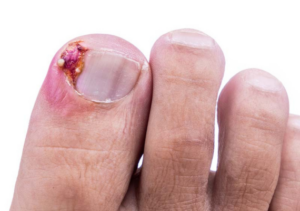Plantar warts are small, noncancerous growths that develop on the soles of the feet. They are caused by the human papillomavirus (HPV) and can be painful, especially when located on weight-bearing areas. Plantar warts are a common condition and can affect people of all ages, though they are particularly prevalent in children and teenagers.
Causes of Plantar Warts
- Human Papillomavirus (HPV): Plantar warts are caused by specific strains of HPV that enter the skin through tiny cuts, abrasions, or other breaks. The virus thrives in warm, moist environments such as locker rooms, public showers, and swimming pools.
- Direct Contact: HPV can spread through direct contact with an infected person or surface.
- Weakened Immune System: Individuals with weakened immune systems are more susceptible to HPV infections, including plantar warts.

